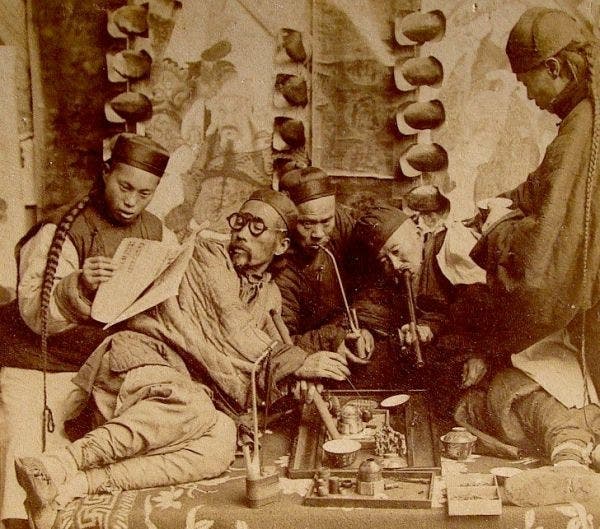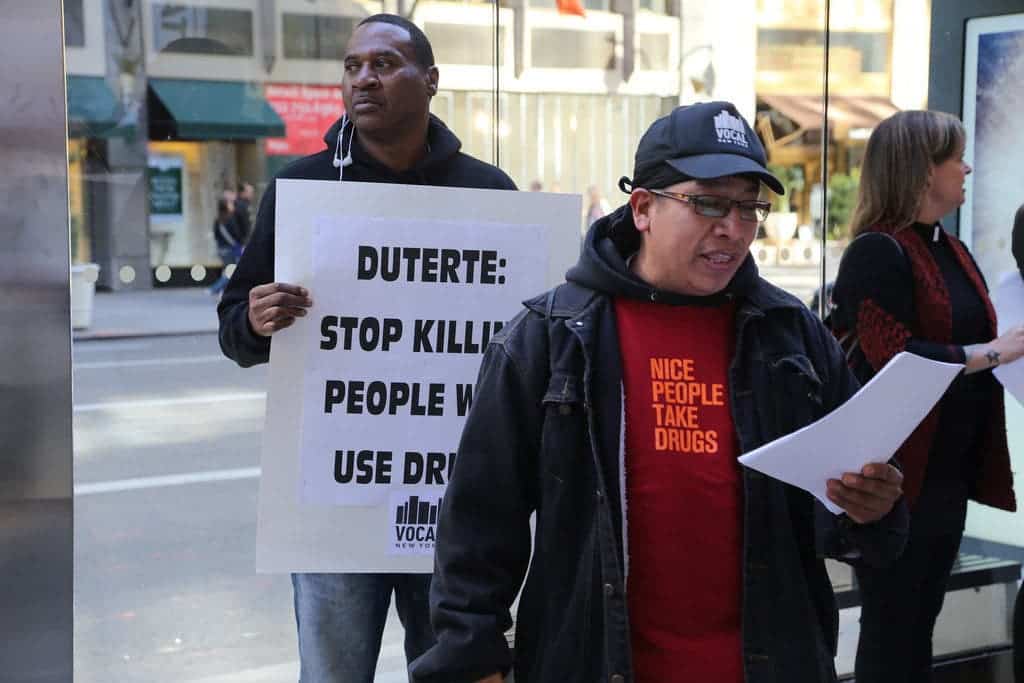Recent moves toward the legalization of cannabis use, farming, and distribution across several countries like the United States, Canada, or Uruguay is casting doubts on the future of international drug treaties. Such legislative changes essentially violate drug control treaties endorsed by most member states of the United Nations (UN). One scholar argues that these international frameworks are outdated and require urgent reform. His paper outlines several suggestions for the incremental reform of liberal drug policies instead of decriminalizing drugs with high abuse potential head on.
Addiction, war, and treaties

Nearly 100 years ago, in 1909, the international community met in Shanghai to find a solution to the single largest drug problem the world has ever had: the Chinese opioid epidemic. At its peak, the opioid trade affected tens of millions of Chinese who were addicted to the drug, with nearly a quarter of the country’s adult male population using it annually.
This was a huge problem for China, as the drug trade not only took a toll on its working population but also dwindled its foreign reserves which were funneled into opium imports. Earlier, in the mid-19th century, China even went to war with the British Empire twice following an opium embargo. It ended disastrously and China was not only forced to lift the opium embargo but also cede the island of Hong Kong to the British.
You see, opium was not only addictive to its entrenched consumers, but to many governments who filled their treasury coffers with handsome profits. British India, for instance, derived 14% of state income from its opium monopoly in 1880. And after its two wars with the British which forced China to open opium trade, the latter simply started to grow its own poppy domestically. At the time of the Shanghai Commission, China derived at least 14% of its income from the drug through taxation.
While seemingly successful in its stated goal of curbing international drug trade, the Shanghai Commission was a non-binding agreement. The first international drug convention, the International Opium Convention of The Hague, was signed in 1912 and entered into force in 1915. This was the first truly international instrument for dealing with drug trade which required signatories to enforce anti-narcotics policies.
The scope of controlled substances was gradually expanded from opium and morphine (Recommendations of the Shanghai Conference, 1909) to cocaine (The Hague Convention, 1912), cannabis (1925 Convention), synthetic opiates (1948 Protocol), psychotropic substances (Convention on Psychotropic Substances, 1971) and precursor chemicals (1988 United Nations Convention
against Illicit Traffic in Narcotic Drugs and Psychotropic Substances).
The aim of all these treaties was to reduce the harmful use of prohibited drugs and facilitate access to these drugs for medical and scientific purposes. Over time results started to show.
“For those who doubt the effectiveness of drug control, consider this. In 1906, 25 million people were using opium in the world (1.5% of the world population) compared with 16.5 [million] opiate users today (0.25% of the world population). In 1906/07, the world produced around 41,000 tons of opium – five times the global level of illicit opium production in 2008. While opium used to be produced in a huge belt, stretching from China to Indochina, Burma, India, Persia, Turkey and the Balkan countries, the illegal production of opium is now concentrated in Afghanistan (92%),” wrote Antonio Maria Costa, Executive Director United Nations Office on Drugs and Crime in a report called Drug Control 1909-2009:A Positive Balance Sheet.
“Same for coca. Its leaves used to be cultivated not only in the Andean region but also in several Asian countries including Java (Indonesia), Formosa (Taiwan) and Ceylon (Sri Lanka). Today coca leaf production is concentrated in three Andean countries: Colombia, Peru and Bolivia,” he added.
Drug control treaties need to face a new reality

But critics claim that the treaties have failed to tackle non-medical use of prohibited drugs and have justified policies that conflict with UN human rights treaties by incarcerating large numbers of drug users. The famous ‘war on drugs’ has failed at the expense of billions in taxpayers’ money and thousands of users who faced prison.
Despite considerable resources devoted to controlling illicit substances, the United States is now facing its own opioid epidemic. In the last decade alone, the number of heroin users have grown fivefold with young, white males being the most vulnerable group. Since the year 2000, the number of deaths from heroin overdose has quadrupled.
Many governments have now relaxed drug control to the point of decriminalization or downright legalization as is the case of cannabis in Uruguay or Nevada. Professor Wayne Hall, whose 2014 review of 20 years of cannabis research made world headlines, stresses that these measures violate a number of drug control treaties.
“A major impediment to any nation abandoning the policy of drug prohibition has been the fact that international drug treaties to which the majority of United Nations (UN) member states are signatory prohibit the non-medical use of amphetamines, cannabis, cocaine and heroin. The future of these treaties is now uncertain because of decisions by Uruguay, eight US states and Canada to legalize cannabis use,” he wrote.
Hall cautions in a new paper published in Addiction that if decriminalization is the way to go in the future, the future of such drug treaties comes in doubt. They can not disappear entirely either as this would come at the cost of public health.
Hall argues policy reforms should involve trialing and evaluating the effects of incrementally more liberal drug policies. Some of his most important suggestions include:
- Cannabis: This is the strongest candidate for national policy experiments on different ways of regulating its sale and use. This is happening in the USA, Uruguay, and Canada. Rigorous evaluations of these experiments will be useful for other countries considering legalizing cannabis for adult recreational use.
- Party drugs, such as ecstasy, LSD, and novel psychoactive substances: The most important regulatory challenge for those who advocate more liberal policies are ensuring that drug manufacture and sale meet reasonable standards of consumer safety and that consumers are well informed about the risks of using these drugs.
- Opioids: The best way forward may be a mitigated form of prohibition. Mitigated prohibition differs from a ‘war on drugs’ by expanding treatment for opioid dependence, reducing some of its serious medical complications, and reducing the number of opioid users who are imprisoned.
- Cocaine and amphetamines: There are no easy answers here. Proposed regulation via a modified prescription system seems unlikely to reduce harmful use. Prohibition may minimize use but it is not sufficient, because stimulants are very easy to produce illicitly. Stimulant policy needs better ways of reducing the demand for stimulants and more effective treatments for problem stimulant users.



